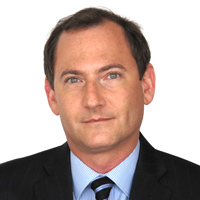A Timeline of Warren Buffett's Life and Berkshire Hathaway
Buffett was the face of Berkshire Hathaway for 60 years. Here's a timeline of how he built the sprawling holding company and its outperforming equity portfolio.

Anne Kates Smith

Warren Buffett is known as the greatest long-term investor of all time, but that kind of gives him short shrift. When the Oracle of Omaha steps down as CEO of Berkshire Hathaway (BRK.B) at the end of 2025, it will mark the end of the career of the greatest capital allocator of all time.
What's the difference? Market participants who pore over which stocks Buffett is buying and selling every quarter forget that Berkshire is essentially a conglomerate with massive insurance operations at its core.
That's not to denigrate Buffett and his late partner Charlie Munger's stock-picking skills. They are legendary. But the company's equity holdings are just a part of Berkshire stock's incomparable run over the past 60 years.
From just $107.88 $24.99 for Kiplinger Personal Finance
Become a smarter, better informed investor. Subscribe from just $107.88 $24.99, plus get up to 4 Special Issues

Sign up for Kiplinger’s Free Newsletters
Profit and prosper with the best of expert advice on investing, taxes, retirement, personal finance and more - straight to your e-mail.
Profit and prosper with the best of expert advice - straight to your e-mail.
Recall that Berkshire Hathaway was a struggling textile firm when Buffett took control in 1965. Over the ensuing years, Buffett converted it into a holding company, or a company that buys other companies.
Buffett's first target was an insurance company, and the insurance business continues to be at the core of its operations today.
The insurance business was especially attractive to Buffett because of float, or the money insurance companies hold between collecting premiums and paying out claims.
Thanks to the float from Berkshire's insurance companies, Buffett had a source of permanent capital to go shopping for other businesses and equities.
The end result is a sprawling set of wholly owned subsidiaries that collectively represent an endlessly optimistic bet on the dynamism of the U.S. economy.
Geico insurance is perhaps the crown jewel of Berkshire's businesses, but more than 60 other companies also contribute to its bottom line.
Plenty of folks might know that BNSF Railway, industrial titan Precision Castparts and Duracell are among Berkshire's businesses. But let's not forget about smaller operations such as Dairy Queen, Froot of the Loom, See's Candies and the wonderfully named Acme Brick Company.
Below, we feature some of Berkshire's high- and lowlights over the past six decades.
1965: Buffett takes control of struggling textile manufacturer Berkshire Hathaway – ironically, a purchase he would later deem "my first mistake."
1967: Berkshire Hathaway pays a dividend of 10 cents a share – the first and only dividend the company has ever paid.
1976: Buffett buys 1 million shares in insurance company Geico at about $2 per share. The stock had traded at $61 per share in 1972. Buffett first bought shares in 1951; Geico became a wholly owned Berkshire subsidiary in 1996.
1988: Berkshire starts buying Coca-Cola (KO), purchasing a 7% stake in the consumer staples stock for just over $1 billion. Today, Coke is Berkshire's third-largest holding, worth some $26.6 billion.
1993: Buffett buys Dexter Shoe for $433 million in Berkshire stock. Not only does the business eventually fail, but the shares paid would today be worth roughly $19 billion.
1996: Berkshire issues Class B shares, priced at $23.20, or one-thirtieth of the Class A shares. The B shares traded at $504 in May, up more than 2,000%.
2010: Berkshire makes the largest business acquisition in the company's history, buying Burlington Northern Santa Fe Railway for $44 billion.
2016: Buffett starts buying stock in Apple (AAPL), overcoming an aversion to tech stocks when he realizes – after noticing customers in line at a local Dairy Queen absorbed in their iPhones – that Apple is also a consumer products company.
2025: Buffett announces his retirement at the end of the year, "setting a gold standard for how corporate succession should be planned and implemented," says David Kass, a finance professor at the University of Maryland.
Note: The timeline of Berkshire's high- and lowlights first appeared in Kiplinger Personal Finance Magazine, a monthly, trustworthy source of advice and guidance. Subscribe to help you make more money and keep more of the money you make here.
Related content
- I'm an Investing Expert: This Is How You Can Invest Like Warren Buffett
- If You'd Put $1,000 Into Berkshire Hathaway Stock 20 Years Ago, Here's What You'd Have Today
- 7 of Warren Buffett's Biggest Misses
- 5 of Warren Buffett's Best Investments
Profit and prosper with the best of Kiplinger's advice on investing, taxes, retirement, personal finance and much more. Delivered daily. Enter your email in the box and click Sign Me Up.

Dan Burrows is Kiplinger's senior investing writer, having joined the publication full time in 2016.
A long-time financial journalist, Dan is a veteran of MarketWatch, CBS MoneyWatch, SmartMoney, InvestorPlace, DailyFinance and other tier 1 national publications. He has written for The Wall Street Journal, Bloomberg and Consumer Reports and his stories have appeared in the New York Daily News, the San Jose Mercury News and Investor's Business Daily, among many other outlets. As a senior writer at AOL's DailyFinance, Dan reported market news from the floor of the New York Stock Exchange.
Once upon a time – before his days as a financial reporter and assistant financial editor at legendary fashion trade paper Women's Wear Daily – Dan worked for Spy magazine, scribbled away at Time Inc. and contributed to Maxim magazine back when lad mags were a thing. He's also written for Esquire magazine's Dubious Achievements Awards.
In his current role at Kiplinger, Dan writes about markets and macroeconomics.
Dan holds a bachelor's degree from Oberlin College and a master's degree from Columbia University.
Disclosure: Dan does not trade individual stocks or securities. He is eternally long the U.S equity market, primarily through tax-advantaged accounts.
- Anne Kates SmithExecutive Editor, Kiplinger Personal Finance
-
 Vesting, Catch-Ups and Roths: The 401(k) Knowledge Quiz
Vesting, Catch-Ups and Roths: The 401(k) Knowledge QuizQuiz Test your understanding of key 401(k) concepts with our quick quiz.
-
 Why You Should Pay Attention to Company Guidance
Why You Should Pay Attention to Company GuidanceUnderstanding how corporate profit forecasts affect analysts’ estimates and stock ratings can help you make investment decisions.
-
 How to Protect Yourself and Others From a Troubled Adult Child
How to Protect Yourself and Others From a Troubled Adult ChildThis case of a violent adult son whose parents are in denial is an example of the extreme risks some parents face if they neglect essential safety precautions.
-
 Why You Should Pay Attention to Company Guidance
Why You Should Pay Attention to Company GuidanceUnderstanding how corporate profit forecasts affect analysts’ estimates and stock ratings can help you make investment decisions.
-
 How to Protect Yourself and Others From a Troubled Adult Child: A Lesson from Real Life
How to Protect Yourself and Others From a Troubled Adult Child: A Lesson from Real LifeThis case of a violent adult son whose parents are in denial is an example of the extreme risks some parents face if they neglect essential safety precautions.
-
 To Build Client Relationships That Last, Embrace Simplicity
To Build Client Relationships That Last, Embrace SimplicityAs more automation becomes the norm, you can distinguish yourself as a financial professional by using technology wisely and prioritizing personal touches.
-
 Client Demand Is Forcing Financial Advisers to Specialize: How to Deliver
Client Demand Is Forcing Financial Advisers to Specialize: How to DeliverThe complexity of wealthy clients' needs — combined with AI and consumer demand — suggests the future of financial planning belongs to specialized experts.
-
 Stocks Rise to the Spirit of the Season: Stock Market Today
Stocks Rise to the Spirit of the Season: Stock Market TodayInvestors, traders and speculators are beginning to like the looks of a potential year-end rally.
-
 A Financial Planner Takes a Deep Dive Into How Charitable Trusts Benefit You and Your Favorite Charities
A Financial Planner Takes a Deep Dive Into How Charitable Trusts Benefit You and Your Favorite CharitiesThese dual-purpose tools let affluent families combine philanthropic goals with advanced tax planning to generate income, reduce estate taxes and preserve wealth.
-
 A 5-Step Plan for Parents of Children With Special Needs, From a Financial Planner
A 5-Step Plan for Parents of Children With Special Needs, From a Financial PlannerGuidance to help ensure your child's needs are supported now and in the future – while protecting your own financial well-being.
-
 How Financial Advisers Can Best Help Widowed and Divorced Women
How Financial Advisers Can Best Help Widowed and Divorced WomenApproaching conversations with empathy and compassion is key to helping them find clarity and confidence and take control of their financial futures.